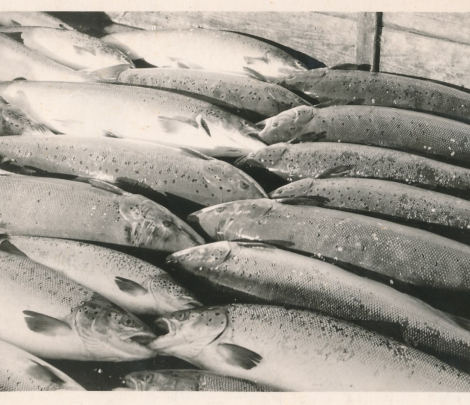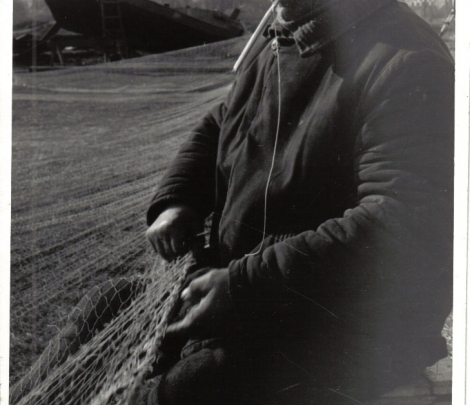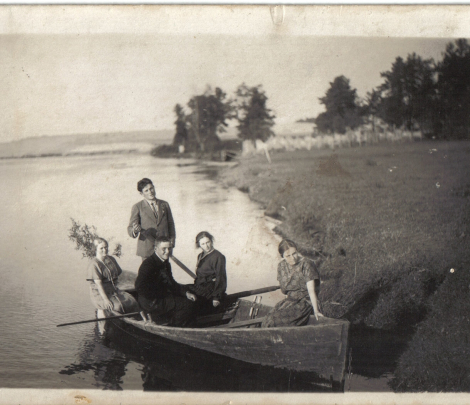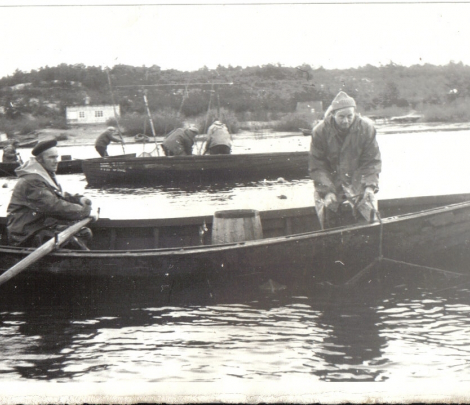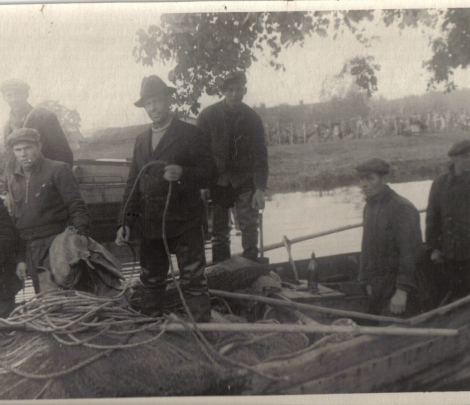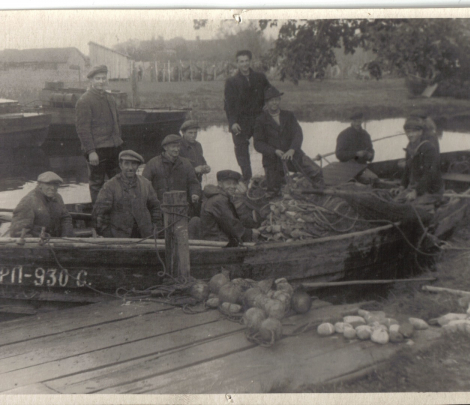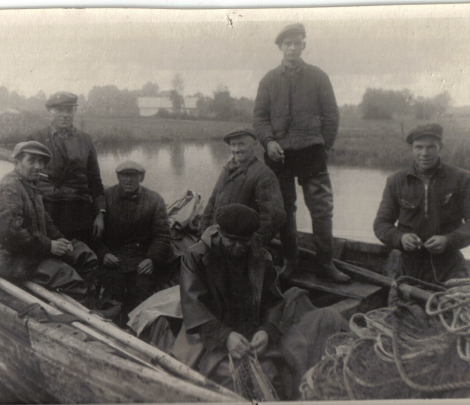History of Fishing in Carnikava
Fishing has always been one of the most important livelihoods for the people of Carnikava. Thanks to the proximity of the Gauja and the sea, this is a birthplace of resilient fishermen. Lamprey, salmon, salmon (sea) trout, vimba bream, whitefish, pike perch (zander), Baltic herring, flounder, sprat, eel, eelpout etc. have been traditionally fished here. Various types of fishing were popular in Carnikava – salmon fishing at sea with seine nets, eel fishing with fish-hooks, winter lake fishing, lamprey fishing with “brushes” or “pistongs”, herring ice fishing, and – of course – lamprey and salmon fishing with traps called tači. Various types of fishing nets also were used, such as dragnets, throw-baskets and the bogars. Nets were woven by local fishermen from home-spun linen, but later factory-made cotton thread was introduced and since the early 20th century ready-to-use net mesh came into fashion. Fishermen mended their own nets – a trait still practiced and passed on to the young by them.
One of the symbols of Carnikava is the tacis – a passive trap, used for catching lampreys (or zuteņi, as they’re also called locally) and salmon. The lamprey fishing season starts from late July, and lamprey has been fished in Carnikava at least since the times of the Livonian Confederation (13th-16th centuries).
Carnikava previously also had a Fishing House. Reports from the 19th century describe a building with a fish nursery in the basement and a historic lamprey cookhouse. Construction of a modern Fish House with cookhouses, a storage, viewing tower and an event hall began in 1933. Lamprey tasting sessions and tours also were organized in the building, and it was the destination for passengers of the special Lamprey Trains in the 1920s and 30s. Manufacturing capabilities were also increased during the time of the Soviet kolkhoz (collective farm).
During World War II, local fishermen enjoyed their protected status – fish was a strategically important product, which is why fishermen, who were important food providers, were drafted in to the military as one of the last ones. After the war, despite the hardship and repression of the Soviet occupation regime, the craft and life of fishermen continued to develop. In 1945, two motorboat brigades (Laimdota and Imanta) were assembled from around 50 fishermen, as well as a sweet-water fishing brigade – with a total quarterly fishing quota target set at 800 zentners (8 tons, ~16 000 lbs). The quotas grew each year, but the local fishermen pulled through, and in 1971 the kolkhoz reported an income of 3,5 million Soviet rubles and the filling of all government-set quotas.
After the restoration of Latvian independence, fishing traditions continued into the 1990s, with two fishing brigades – SIA Leste and SIA Grif 93 operating as of today. At the moment, the lamprey is the main dish and source of income for our fishermen. That’s why it is the pride and highlight of Carnikava, especially since the Carnikava lamprey was awarded the European Union Protected Geographical Indication and Traditional Speciality Guaranteed labels in 2015.
Angling is also gaining popularity, which is why in 2015 the Carnikava Fishing School was established, uniting enthusiasts from all over the municipality.
